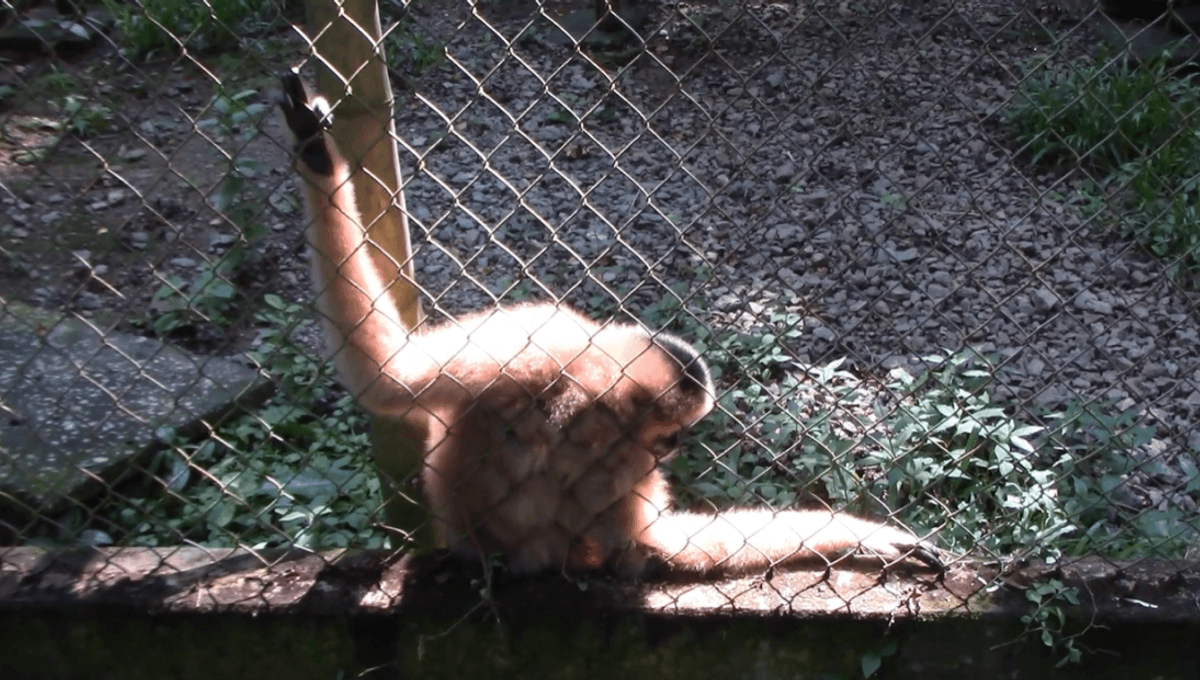
Supplementary materials don’t get any better than those of a recent preprint that dives into the dancing skills of crested gibbons. Armed with ridiculously long limbs, these primates were already primed to throw some serious shapes – but nobody at IFLScience was quite expecting the scenes that would unfold in “Dance displays in gibbons: Biological and linguistic perspectives on structured, intentional and rhythmic body movement.”
Yes, gibbons can dance. More specifically, female crested gibbons from the Nomascus genus (N. annamensis, N. gabriellae, N. leucogenys, and N. siki). Not only are they dancing, but they’re throwing together some serious styles in what paper co-author and professor of linguistics Pritty Patel-Grosz describes as “a bit like a mix between a robot dance and vogueing”.
It’s giving “it’s past 9pm at a wedding,” and we’re so here for it.
The above footage was captured at the Endangered Primate Rescue Centre in Vietnam by Kaylen Kilfeather, who shared the footage with the authors of a new paper that’s not yet been published or undergone peer review. It shows the dancing that’s been reported among captive gibbons from 1984 onwards, moves that have historically been described as “bobbing”, or as co-author Dr Kai Caspar put it to IFLScience, “an abrupt stiffening of the body, accompanied by twitching movements of the limbs and rump.”
There’s more to the gibbon grind than entertaining videos, however. By analyzing close-range recordings of captive crested gibbons, the team set out to focus on three key areas that have been overlooked in previous studies into gibbon dancing: grouping structure of movements, intentionality, and rhythmicity.
It remains to be clarified if dances or certain aspects of their structure do actually increase sexual attractiveness
Dr Kai Caspar
Their findings suggest that dance is a common social display in Nomascus gibbons, and that it’s only performed by sexually mature females. From their survey results, it seems the boogying kicks in around the time of their first period and can continue on into late age even when the female may not be reproductively active.
Yes, for the gibbon girls, shaking it seems to be a good way to get your message across to other gibbons, but as for exactly what that message is? It’s not yet known for certain. There are reports of dancing leading to copulation, suggesting it could be a means of luring in a mate, but dancing was also seen when the females were in states of non-sexual arousal.
“It remains to be clarified if dances or certain aspects of their structure do actually increase sexual attractiveness or if they just represent a general signal of arousal that signals sexual intentions in some contexts,” explained Caspar.
The finer details of the dancing may also be individual-dependent, and the authors note that their findings are based on captive animals. In orangutans it’s already been shown that gesture use varies from zoo contexts to the wild, and the same could be true of gibbon dancing.
Whatever the motivator, the research represents a new approach to primate communication in focusing on the visual cue of dancing over more commonly studied cues like vocalizations. And if it means the gibbon dancing videos keep on coming? Let the good times roll.
The preprint is posted to BioRxiv.
Source Link: Female Gibbons Perform Something Between "A Robot Dance And Vogueing" To Communicate